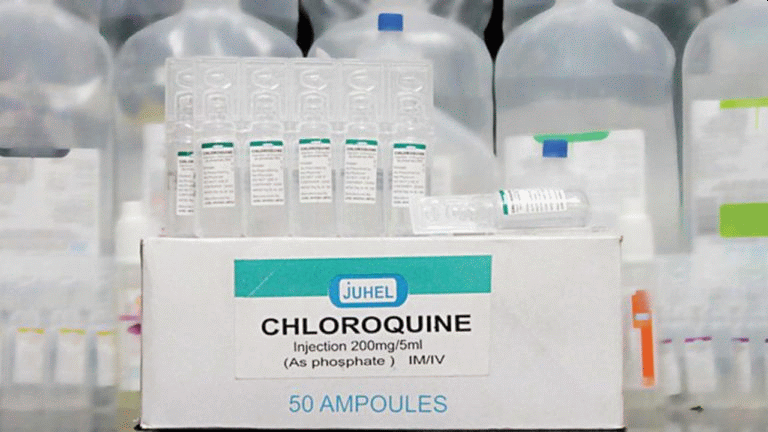Chloroquine is a medication used to prevent and to treat malaria in areas where malaria is known to be sensitive to its effects.
Occasionally it is used for amebiasis that is occurring outside the intestines, rheumatoid arthritis, and lupus erythematosus.
Now it is being used experimentally to treat COVID-19 as of 2020.

In late January 2020 during the 2019–20 coronavirus outbreak, Chinese medical researchers stated that exploratory research into chloroquine and two other medications, remdesivir and lopinavir/ritonavir, seemed to have fairly good inhibitory effects on the SARS-CoV-2 virus, which is the virus that causes COVID-19
Then On 19 February 2020, preliminary results found that chloroquine may be effective and safe in treating COVID-19 associated pneumonia.

The Guangdong Provincial Department of Science and Technology and the Guangdong Provincial Health and Health Commission issued a report stating that chloroquine phosphate improves the success rate of treatment and recommended it for people diagnosed with mild, moderate and severe cases of novel coronavirus pneumonia.
CHLOROQUINE HAS A VERY HIGH VOLUME OF DISTRIBUTION, AS IT DIFFUSES INTO THE BODY’S ADIPOSE TISSUE.

Chloroquine is also a lysosomotropic agent, meaning it accumulates preferentially in the lysosomes of cells in the body.
THE PKA FOR THE QUINOLINE NITROGEN OF CHLOROQUINE IS 8.5, MEANING IT IS ABOUT 10% DEPROTONATED AT PHYSIOLOGICAL PH AS CALCULATED BY THE HENDERSON-HASSELBALCH EQUATION.
The lysosomotropic character of chloroquine is believed to account for much of its antimalarial activity; the drug concentrates in the acidic food vacuole of the parasite and interferes with essential processes.
Its lysosomotropic properties further allow for its use for in vitro experiments pertaining to intracellular lipid related diseases.
with this development, it appears there is hope of recovery from the dreaded virus that has ravaged the globe, claiming dozens of lives





